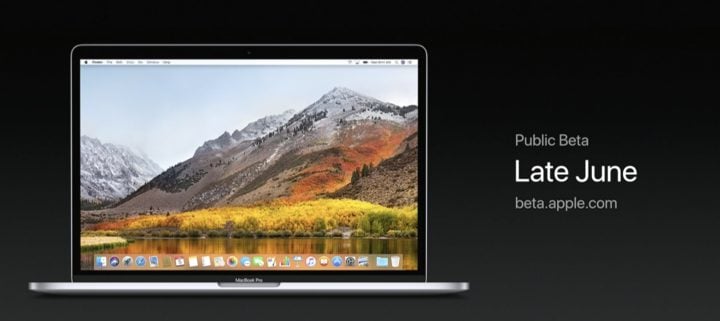

- #PRO TOOLS MAC OS HIGH SIERRA HOW TO#
- #PRO TOOLS MAC OS HIGH SIERRA INSTALL#
- #PRO TOOLS MAC OS HIGH SIERRA UPDATE#
- #PRO TOOLS MAC OS HIGH SIERRA UPGRADE#
#PRO TOOLS MAC OS HIGH SIERRA INSTALL#
Then back up all of your data, boot to the USB installer and use Disk Utility to erase the drive, and then install High Sierra from scratch.įor those who don’t like the sound of that, but still fear needing to downgrade, one forward-looking solution is to get into the habit of creating bootable backups of your Mac’s primary drive. To do so, you’d need to use the steps above to download the High Sierra installer and create a bootable USB. You see, there’s no built-in, official way to downgrade nondestructively from one macOS version to another. This should take you to the macOS High Sierra page in the Mac App Store.Depending on your browser, you may need to click “allow” or “open” to have the link open in the Mac App Store. Even though Apple hides High Sierra from the Mojave Mac App Store, you can still access the High Sierra download page via this direct link.
#PRO TOOLS MAC OS HIGH SIERRA UPDATE#

#PRO TOOLS MAC OS HIGH SIERRA HOW TO#
The second part of this article describes how to downgrade macOS Mojave to macOS High Sierra. Note: These initial instructions are not to downgrade from Mojave to High Sierra but to download High Sierra to use on another Mac. This TechJunkie tutorial will show you the process of downloading macOS High Sierra.

Thankfully, there’s still a way to download High Sierra on a Mac running Mojave, even if Apple doesn’t make the process clear. We here at TechJunkie even discussed the issue in an article about the problems with frequent updates need for Apple to tap the brakes: Apple’s Frequent Update Experiment Has Failed – It’s Time for Another Snow Leopard. Reasons for doing so may include downloading an installer for another Mac that has limited or no Internet access, troubleshooting another Mac that won’t boot, or even creating a bootable installer for the purpose of downgrading your own Mac if you find that software you rely on has incompatibilities with the latest version of macOS. While Apple would justify this limitation in the name of simplifying things for consumers, the fact remains that many users may still need to download an older version of macOS at some point.
#PRO TOOLS MAC OS HIGH SIERRA UPGRADE#
The idea is that once you upgrade to the latest version of macOS there’s no going back to using an earlier version. For example, once you’re running macOS Mojave, you won’t see the macOS High Sierra page listed in the Mac App Store, nor will it show up in App Store search results. See Apple Security Updates for detailed information about the security content of this update.How to Download macOS High Sierra From macOS MojaveĮver since Apple started using the Mac App Store to distribute operating system updates, the company hasn’t made it particularly easy to access older versions of macOS. Fixes an issue that may prevent Mail users from moving a message from Gmail to another account.Fixes an issue that may prevent Photos from recognizing AVCHD media from some cameras.Play music at the same time on multiple AirPlay 2-enabled speakers in your house, all in sync.Control your home audio system and AirPlay 2-enabled speakers throughout your house.This update is recommended for all users. The macOS High Sierra 10.13.6 Update adds AirPlay 2 multiroom audio support for iTunes and improves the stability and security of your Mac. But not by a Mac running OS X El Capitan or earlier. The key issue for Pro Tools users was to absolutely wait until Avid announced they have a version of Pro Tools that is macOS High Sierra compatible, which they have done, as well as any other DAWs you use. MacOS 10.13 High Sierra Pro Audio Compatibility Guide With Regular Updates.


 0 kommentar(er)
0 kommentar(er)
